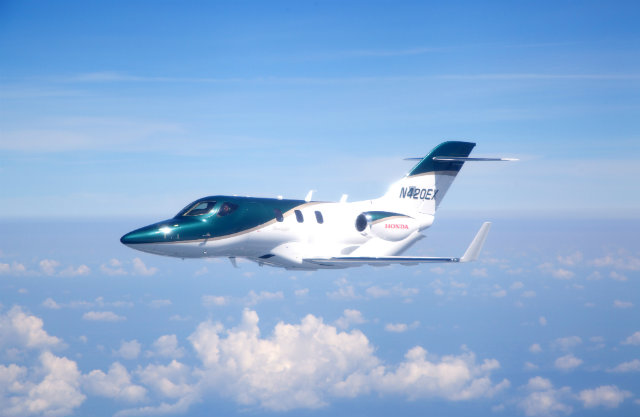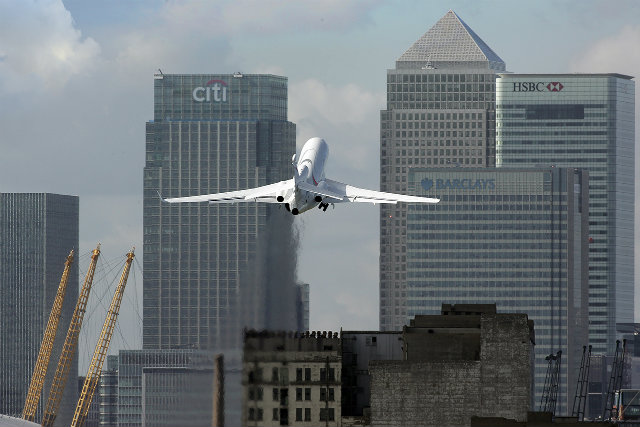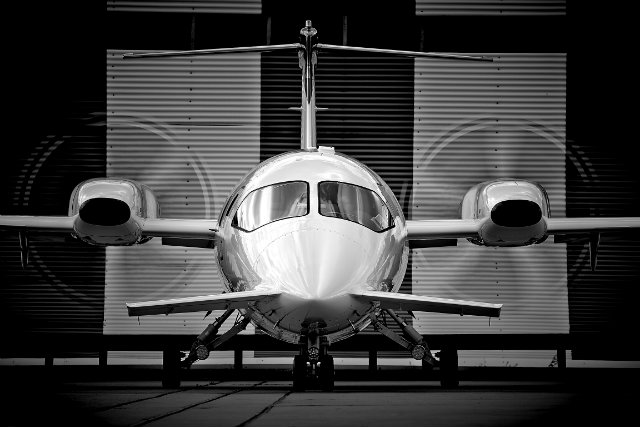Worldwide shipments of fixed-wing business and general aviation aircraft rose slightly during the first nine months of 2017, led by a strong performance from the piston-engined sector. However, total billings for the period slid year on year, reflecting the mix of shipments in favour of smaller, cheaper models.
According to the General Aviation Manufacturers Association, deliveries of piston-engined, jet-engined and turboprop business aircraft rose by 1.7%, to 1,532 units, between January and the end of September – representing a 2.8% fall in the total shipment value, to $13.2 billion.
JET BOOST
The association, headquartered in Washington DC, recorded 434 business jet deliveries in the nine months ended 30 September – six more than in the same period a year earlier. The best performer was Honda Aircraft, which doubled its output for the period to 30 HA-420 HondaJets.
Cirrus, which began deliveries of its Vision SF50 personal jet in December 2016, handed over nine units between January and September. The US airframer recently increased production of the single-engined type to 1.5 aircraft a week, to help clear its 600-order backlog. A further ramp-up is planned in the third quarter of 2018.

Honda Aircraft
Gulfstream recorded a two-unit hike in deliveries, to 90, including the final G150. The airframer called time on the midsize jet and its large-cabin stablemate, the G450, in 2016, following poor sales. The 14-year-old G450 will bow out in January, when its larger, faster and longer-range replacement, the G500, is scheduled to enter service.
Cessna recorded an increase of two Citations over the nine-month period, to 122 aircraft, but this modest output was largely a result of the continued strong demand for its Latitude business jet. Shipments of the midsize type, which entered service in 2015, climbed by 50%, to 36. The CJ4 appears to have fallen out of favour with light business jet buyers, with deliveries of the seven-seat type sliding between January and September by nearly 40%, to 14 aircraft.
GAMA’s report does not include shipments of Dassault Falcon business jets for the full nine months, as the French airframer releases its deliveries and earnings at six-month intervals. However, Flight Fleets Analyzer records 34 Falcon deliveries for the period – seven more than last year – thanks to a rise in shipments of its flagship 8X, which entered service in October 2016.

Dassault
Elsewhere in the business jet sector, Bombardier shipped 96 Learjets, Challengers and Globals – a fall of 14 units year on year. Embraer saw its deliveries slide by 15 units to 59.
Soft demand from the traditionally strong markets of China, Russia and the Middle East continues to affect sales of VIP airliners, but Airbus has been particularly badly hit, delivering no green ACJ models between January and September for the second year in a row. The airframer has an order backlog for 10 aircraft – an ACJ350-900 and nine ACJ319/320neos. The first example from the re-engined single-aisle family, an ACJ320neo, is scheduled for delivery to Swiss completion house AMAC Aerospace in the fourth quarter of 2018.
Boeing fared better during the nine-month period, shipping six green widebodies – three BBJ 777-300ERs; a pair of BBJ 787s and a BBJ 747-8. No 737-derived BBJ deliveries were recorded, however. As with rival Airbus, demand in the single-aisle segment has shifted to the re-engined option. Boeing will deliver its first example, a BBJ Max 8, to US completion centre Comlux America late next year.
PISTONS PERFORM
The piston aircraft sector performed well during the nine-month period, recording a 4% year-on-year rise, to 724 units. This was triggered by an uptick in sales from private flyers and international training schools. Cessna lead the charge, shipping 140 of its high-end piston-singles during the three quarters, compared with 127 during the same period last year.
Diamond also made impressive gains, the GAMA data shows, shipping 98 of its DA family of piston singles and twins – nine more than last year. Cirrus, meanwhile recorded a 10-unit hike in deliveries of its SR-series of high-performance singles, ending September with a total output of 236 aircraft.
Tecnam bucked the upward trend, shipping 132 aircraft between January and September, compared with 146 during the same period a year ago. The fall was mainly attributable to a poor performance from its P92 piston-single, for which no deliveries were recorded.
The turboprop sector was the worst performer in the fixed-wing aircraft market, recording a 2.1% drop in deliveries, to 374 units. The slide is due almost entirely to the poorly performing twin-engined segment.
Weak demand for the Beechcraft King Air family of executive and utility turboprops from the traditionally strong international marketplace, coupled with parent company Textron Aviation’s strategy to hold a firm line on pricing, resulted in a 23-unit fall in shipments between January and September, to 55 aircraft.
The market is proving even more brutal for Piaggio, which failed to deliver a single P.180 Avanti Evo during the first nine months of the year. The prospects for the twin-pusher have also been hampered by parent company Mubadala's 2016 decision to reshape Piaggio’s portfolio and increase its focus on two new variants of the aircraft – one for special missions and the other an unmanned surveillance platform called the P.1HH Hammerhead.

Piaggio Aerospace
In contrast, output across the single-engined turboprop segment was solid between January and September, GAMA data shows. Piper led the field, recording a nearly three-fold increase in deliveries of its flagship M600 – which entered service last year – to 23 units. Daher recorded 36 deliveries of its TBM 930 and 910 – up from 32 the year before.
GAMA president and chief executive Pete Bunce describes the third-quarter shipment and billings as "mixed, with some bright spots that continue trending upward".
He says the association’s focus on streamlining certification and validation processes around the world will help manufacturers continue to bring "new and safer products to the market and hopefully spur growth in future quarters".
Source: Flight International


























